When you walk into a gym, there are SO many options to choose from! How do you go about choosing equipment? What gym equipment is best for beginners? Where do I even start?
While there are endless types of fitness equipment to use, some are way more common than others. I’m going to go through each of the common types of gym equipment and talk about how to use them. Each type of equipment is pretty easy to find when you walk into a gym or when you’re building a home gym.
Each type of equipment comes with a beginner-friendliness rating:
💪💪💪💪💪= Very beginner-friendly; it’s pretty easy with a little bit of research to walk in, pick it up, and start exercising without getting hurt.
💪= Not beginner friendly; I recommend you find a coach to help you learn how to use the equipment properly before going all in.
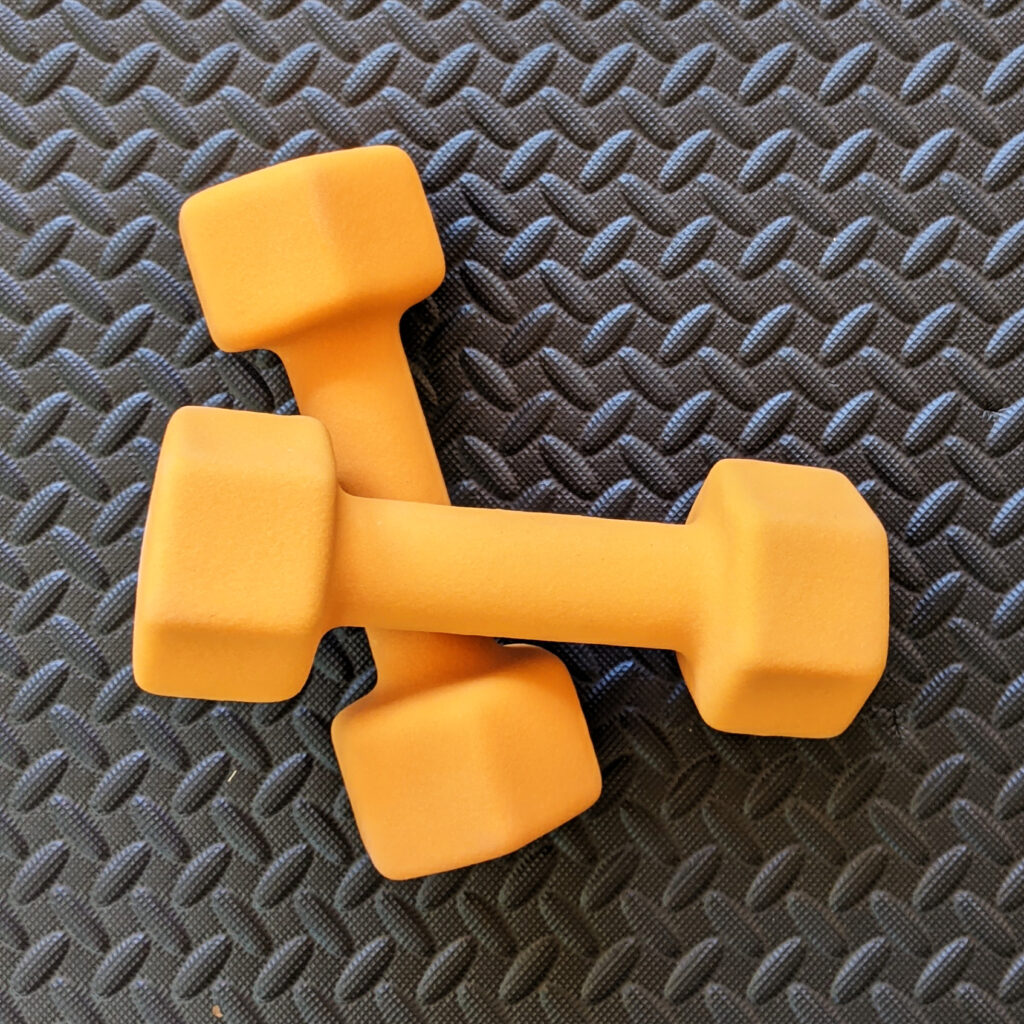
Dumbbells
💪💪💪💪💪
Dumbbells are probably the most common gym equipment you can find- they’re available in most stores and most gyms! They’re made up of a short bar with a weight on either end. Dumbbells are beginner-friendly because they’re so versatile. You can pick one up and do many different types of exercise with them. They’re safer than other types of equipment as long as you pick a weight that’s appropriate to the exercise and your experience level.
Pros:
- Wide variety of weight choices. It’s easy to choose slightly heavier or slightly lighter depending on the exercise.
- They’re fairly inexpensive or easy to find secondhand, so you can build your own home gym.
- You can do a LOT of exercises with them.
Cons:
- More challenging to use the heavier you get. They can become inefficient and it’s usually better to switch to different equipment.
- If you want a variety of weights, they can start to take up a lot of space.
I’m a big fan of these comfy neoprene ones and these grippy hex ones.
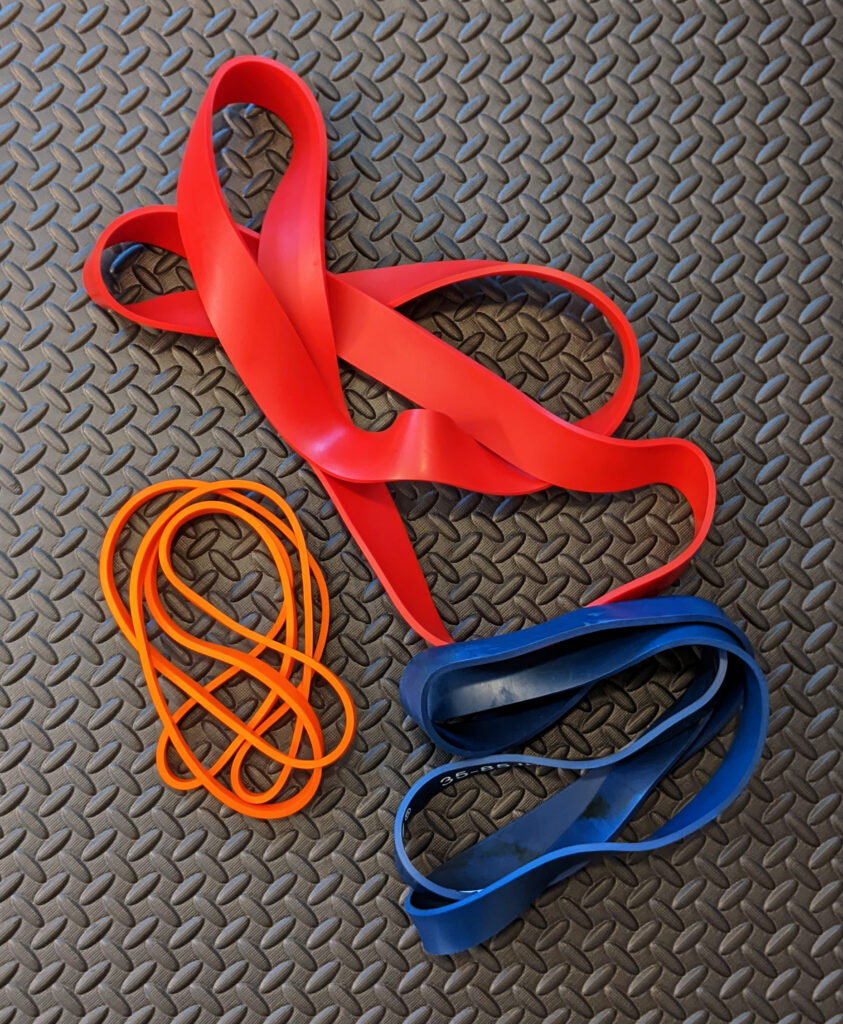
Resistance Bands
💪💪💪💪💪
When you search for resistance bands, you’ll probably find a couple different types. The ones I’m referring to here are long resistance bands of different thicknesses. These are a little more versatile than the smaller ones meant to go around legs or the therapy ones that are much thinner. You can try ones with handles as well depending on what exercises you want to do.
Resistance bands are essentially giant rubber bands. The more you stretch them, the more resistance they’ll give you. This is different from most other gym equipment, which doesn’t change. This can effect which part of the exercise is the most challenging. For example, when I squat with a band, I have it looped around my body. It will have less stretch when I’m at the bottom of my squat, and more at the very end. This isn’t something necessarily better or worse than other types of equipment, just something to remember.
Pros:
- Different thicknesses and the ability to combine two bands give you lots of different resistance options.
- They’re inexpensive and portable, making it easy to start out at home.
Cons:
- Not always available in gym spaces.
- Sometimes difficult to get enough resistance as you get stronger.
- Sometimes hard to find something to attach it to for specific exercises.
This is my favorite resistance band pack.
Quick tip: Resistance bands can be combined with an over-the-door pull up bar for more versatility. You can attach a band and use it for assisted pull ups and similar exercises. By moving the pull up bar to the floor in a doorframe with the resistance band attached, you can also replicate many exercises similar to using a cable machine.
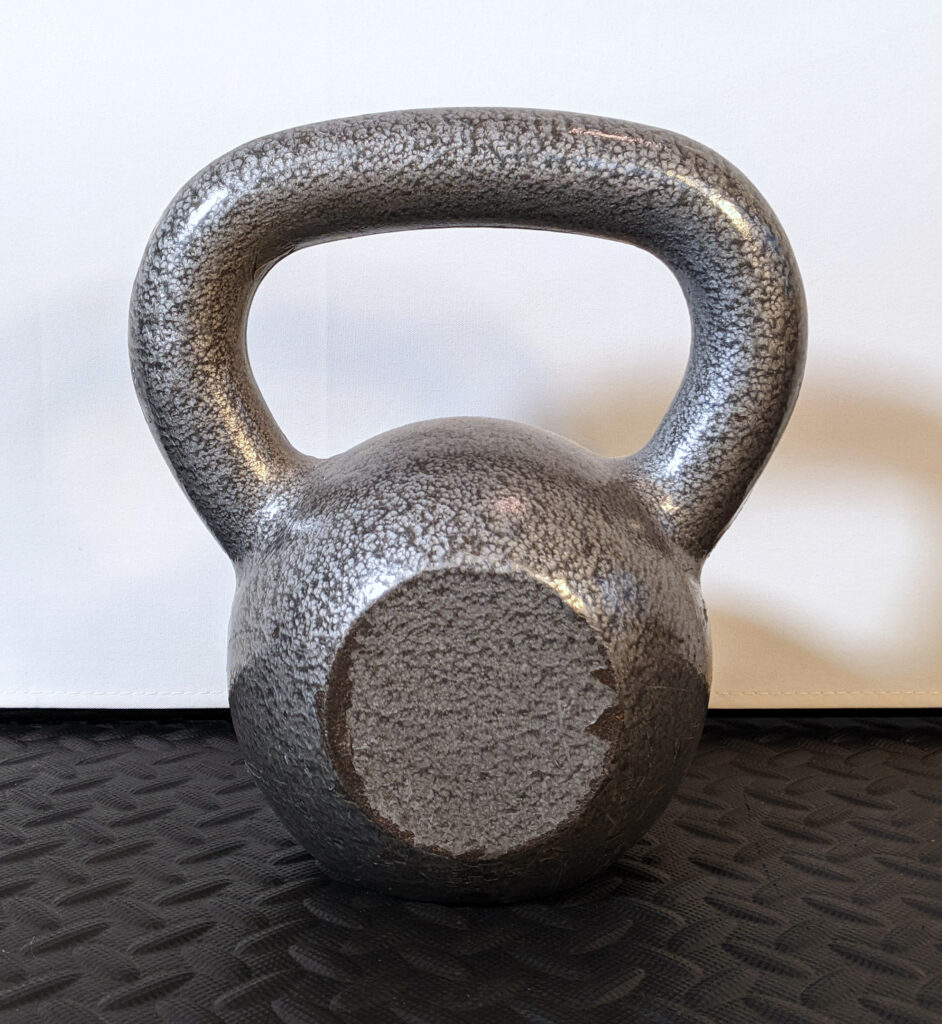
Kettlebells
💪💪💪
Kettlebells look like a cannonball with a handle. While they’re not quite as versatile as dumbbells for many traditional strength training exercises, there are many exercises that work best specifically with a kettlebell.
Exercises that work best with a kettlebell are called ballistics. This refers to the kettlebell swing and similar exercises that move quickly and help you build power, which are challenging with other types of equipment. Kettlebells rate in the middle when it comes to beginner-friendliness because there are some specific techniques for handling kettlebells. Some exercises are done exactly the same as when you’re using other equipment, but others change due to the kettlebell’s shape. It can be helpful to have a coach or someone familiar with kettlebell exercises help you get started with them.
Pros:
- Can be used for some of the same exercises at dumbbells but with the ability to go heavier.
- Putting kettlebell exercises into your workouts can give you more ways to get stronger.
Cons:
- There can be big jumps between weight options.
- They are more expensive if you want multiple weight options.
- Gyms don’t always have them, or don’t have a variety of weight options.
I like cast iron kettlebells (what does that mean?), but these vinyl ones are easier on floors and wrists.
Quick tip: Using kettlebells sometimes tears up people’s hands and wrists. If you’re really wanting to try kettlebells, don’t be afraid to try using wrist straps, chalk, and/or gloves to make your training more comfortable.
Sandbags
💪💪💪💪
You’re probably used to sandbags in contexts outside of fitness, but they’re an amazing way to work on your strength at home or in the gym! They come with handles (sometimes) or can be hugged, thrown, carried, or dragged, depending on the type of training you’re doing, making them perfect for building real-life strength.
Pros:
- More affordable than many other pieces of equipment and can be DIYed.
- Can add unique challenges to basic movements.
- Can choose the weight you want by fill.
Cons:
- Not always available in standard gyms.
- Some styles don’t have handles, which may limit what you can do.
I’m a big fan of these sandbags from Elite Sports!
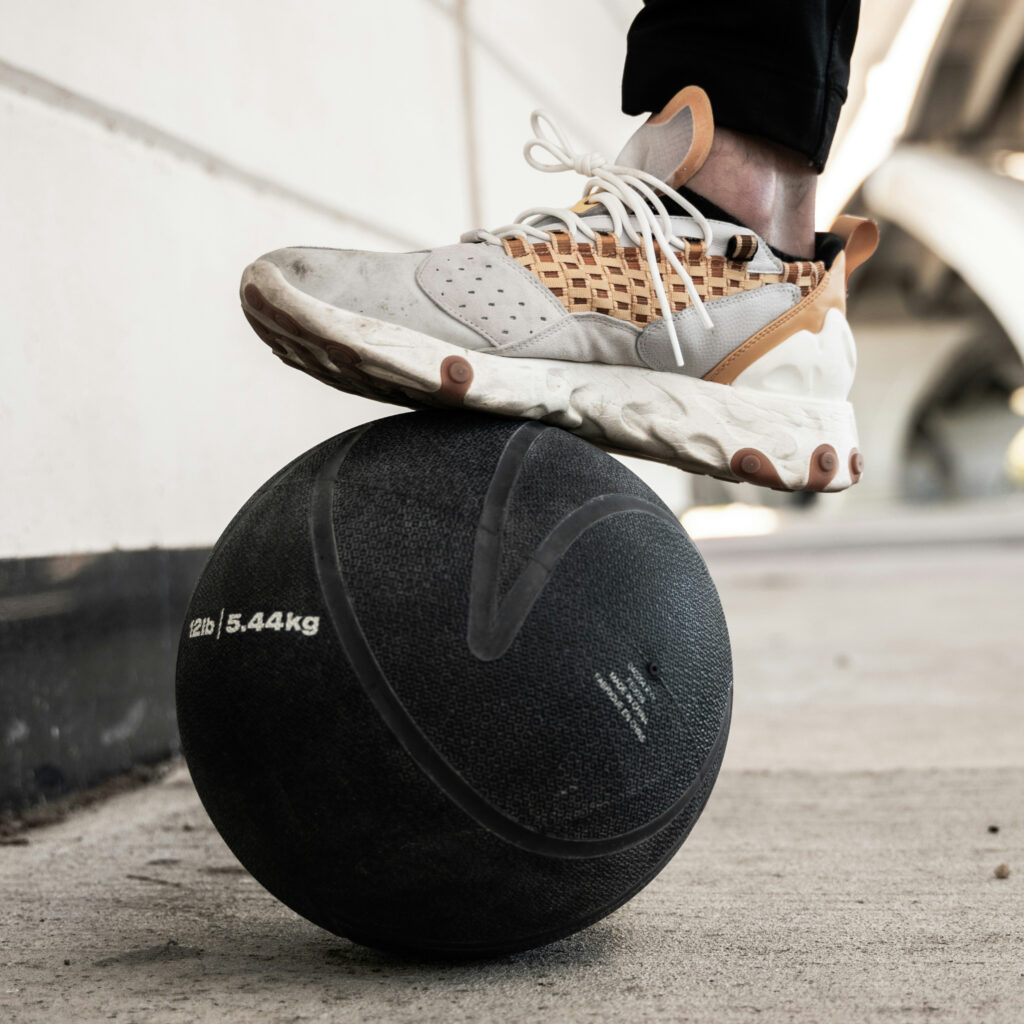
Medicine Balls
💪💪💪💪💪
Medicine balls are weighted balls. There are smaller ones that are around the size of a basketball and larger ones that look more like a beach ball. You can use these in place of other equipment for traditional exercises by holding the ball with both hands. The ball shape also gives you the ability to do many different plyometric/power exercises such as throwing and tossing.
Pros:
- Shape adds additional options.
- Usually in lower weights, making them easy to pick up.
Cons:
- Can be hard to hold onto for some exercises.
- Gyms don’t always have more than a couple.
Barbell and Barbell Plates
💪💪
Barbells look like very long dumbbells. They’re designed to hold a lot of weight and give someone the ability to lift it without getting into awkward positions. The advantage of a barbell is being able to lift much heavier than using other equipment like kettlebells or dumbbells. Barbell plates are the weights that go on either end of the barbell to make it heavier.
Most barbells are 45lbs (20kg) by themselves, but some gyms will also have other types of barbells that are heavier or lighter. Because you’re already starting off heavier than most other equipment by picking up an empty barbell, make sure you know how to do it safely.
The beginner-friendliness rating is lower for barbells because there are some specific techniques that will help you with barbell training. It can be challenging to walk into a gym, put weight on the bar, and know what to do without help. If lifting heavier is something you think you want to do, it’s beneficial to look for a weightlifting, powerlifting, or olympic lifting gym or coach to help guide you.
Pros:
- Lots of options for lifting heavy weights.
- Most barbell exercises work your full body, so they’re great for building strength quickly.
- Barbell plates can be used on their own for different exercises.
Cons:
- Steeper learning curve than other gym equipment.
- Gyms don’t always have tons of space for barbell areas- you might have to wait your turn.
Quick Tip: Some gyms will also have what looks like mini-barbells, called fixed barbells, in different weights. These can be used similarly to barbells and also some dumbbell exercises. They come in lighter weights than a full barbell, but you can hold them with two hands, unlike dumbbells.
Machines
💪💪💪💪💪
Gym machines are probably what you think of when you think of beginner-friendly equipment. Most large gyms have a variety of machines you can use. They’re valuable because they give you the ability to isolate muscles and target them specifically while training. Most machines come with instructions that tell you how to use it.
Some machines are more versatile than others. For example, a cable machine with different attachments can be used for a wide variety of exercises. Others are limited to only one exercise or muscle. The best way to learn how to use machines is to try them all out to see what they do! Luckily, there’s also a lot of instruction you can find online to help you learn how to use them.
Pros:
- Usually easy to read the instructions and figure out what to do.
- Most have weight plates that let you choose what weight you want.
- Effective if you’re looking to get bigger muscles.
- Better to use if you have movement restrictions or get fatigued quickly.
Cons:
- Not many opportunities for building full-body strength.
- You need a lot of equipment to put together a full workout.
- They usually only move one way, which may or may not fit how your body moves.
- Most machines aren’t made for home use.
Quick Tip: If you’re unsure of how to use exercise machines properly, you can sign up for an introductory session at many gyms where they’ll show you how to use the equipment. You can also ask a trainer or employee you see to show you how to use one if you have questions.
Other Equipment
Of course, the equipment I talked about above is only the most common gym equipment you’ll find. There are many, many other types of equipment that you can find at gyms or buy for your home gym. For the sake of this article not being many pages longer, I’ll let you decide whether you want to look into other equipment.
If you’re really excited about trying a specific piece of equipment, go for it! If you’re new, it can be very helpful to hire a coach. There are many coaches (online + in-person) and gyms dedicated to barbell training, kettlebell training, and training that involves many other types of specific equipment. With a knowledgeable coach, any type of equipment can become beginner-friendly.
New to Exercising
If you’re new to exercising, I recommend starting with one type of equipment then branching out once you feel comfortable. When you’re working out at home, make sure you actually use the equipment you have before you go to buy more! Lots of people have a sort of equipment/fitness machine graveyard- equipment they were sure they were going to use that now just collects dust in the basement or closet. It’s better to start with a couple inexpensive dumbbells and get consistent before adding to your collection.
The same goes for gym memberships. You don’t need the most expensive membership or the fanciest equipment to get a good workout. The equipment doesn’t do the workout- you do! The ways you’re moving your body are more important than which weights you’re using. This is why I also wanted to include some at-home swaps for working out at home. If you’re not ready to invest in equipment, that’s okay! You can start with the home versions until joining a gym or investing in equipment.
Equipment: The At-Home Versions
You can get dumbbells, resistance bands, and kettlebells pretty easily for a small at-home gym. But if you’re not quite ready to invest in fitness equipment, there are many at-home options that can replicate the experience.
Bodyweight training can be done with very little equipment, and there are items around the house that can be used for lighter weight lifting. You can absolutely see results by using what you have at home. It gives you flexibility to make sure it’s what you enjoy before investing in a lot of equipment.
Chairs
Chairs can be used to sit on for exercises, hold onto for balance, or put your hands on for inclined exercises.
Backpack or Bag
These can be filled! By using books or other items, you can fill a backpack or bag to the weight you want. You can hold a bag in your hands similar to a dumbbell or kettlebell. You can put a backpack on the front or back of your body to add weight to many different exercises.
Cans and Bottles
These can be used similarly to lighter dumbbells.
Jugs with Handles
Depending on what exercises you’re doing, these can be used like dumbbells or kettlebells.
Bags of Something
Larger bags of, for example, rice or pet food can be used for exercises where you want more weight.
.
As you experiment with different equipment at home or in the gym, you’ll probably find you prefer some over others. That’s normal! The best way to learn what you like is to experiment and be willing to try new things.
Once you have an idea of what kind of equipment you can use, learn about the five basic strength exercises you need to get stronger and how to make a basic workout plan with them.
It can also be helpful to be familiar with different exercise variations. The variation you choose might depend on what type of equipment you want to use or have available to you.
If you want to get a taste of what strength training can feel like, try Strength Snippets! It’s a *free* five-day home workout email experience that helps you get stronger in just a few minutes every day and reframes your feelings about exercise from “bleurgh” to “ohhhh this could be something I actually like doing.”
You can ease into building strength at home without feeling like you have to do a whole workout—each Snippet only takes about five minutes each day! There might even be prizes for finishing all of them… Sign up for Strength Snippets right here!
This article contains affiliate links and sponsored links. If you make a purchase with one of these links, I may receive a small commission at no additional cost to you.
Sarah Siertle
Hey! I'm Sarah!
I'm an inclusive strength & movement coach who helps people get hella strong so they can have fun and live their lives in full color!
My coaching is beginner-friendly, movement-based, and size-inclusive. I believe in coaching that is kind, not shaming or judgmental as so many fitness experiences are.
If you're ready to start your strength journey, you can check out your training options or get five days of five-minute workouts for free!
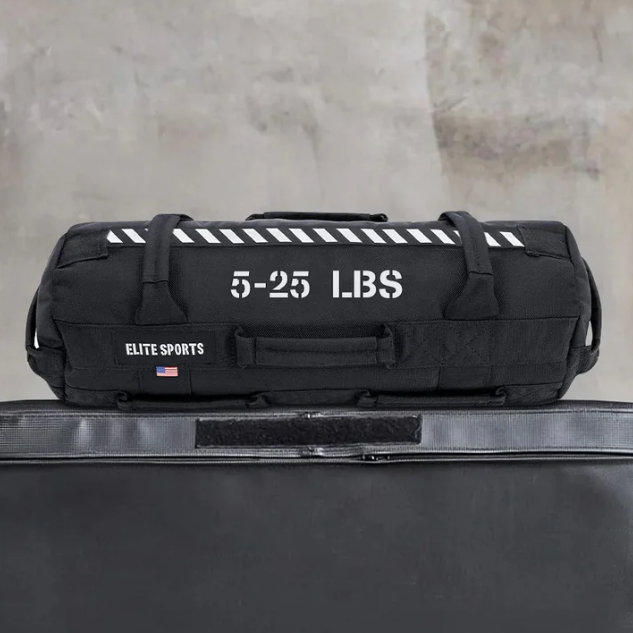
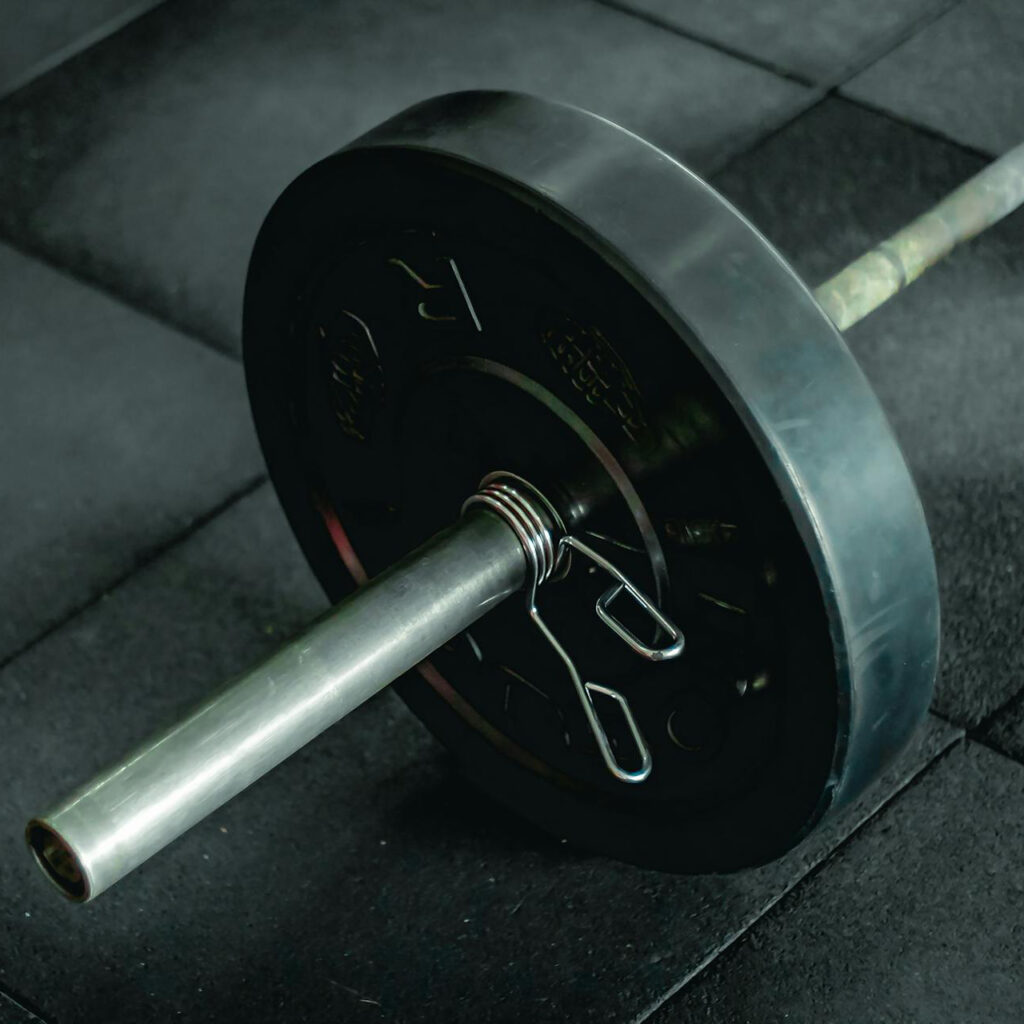
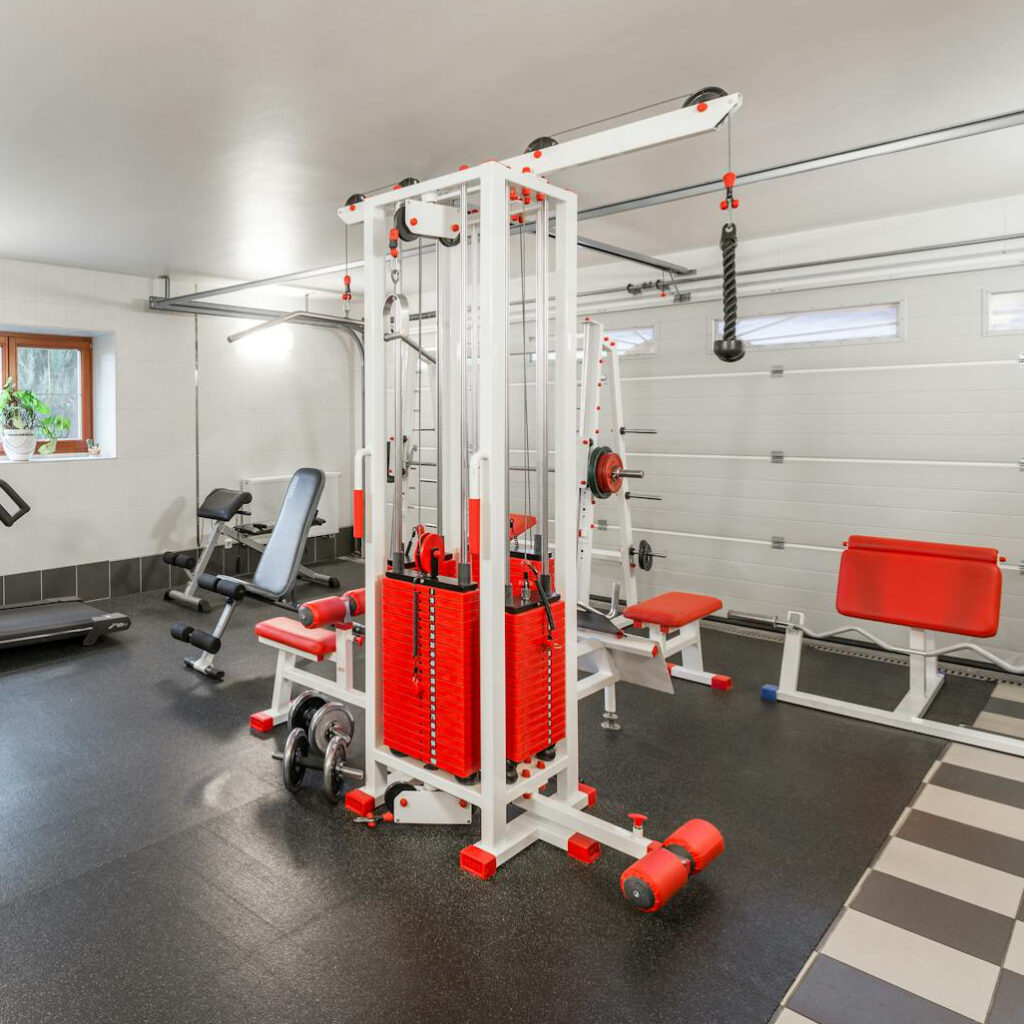
Comments